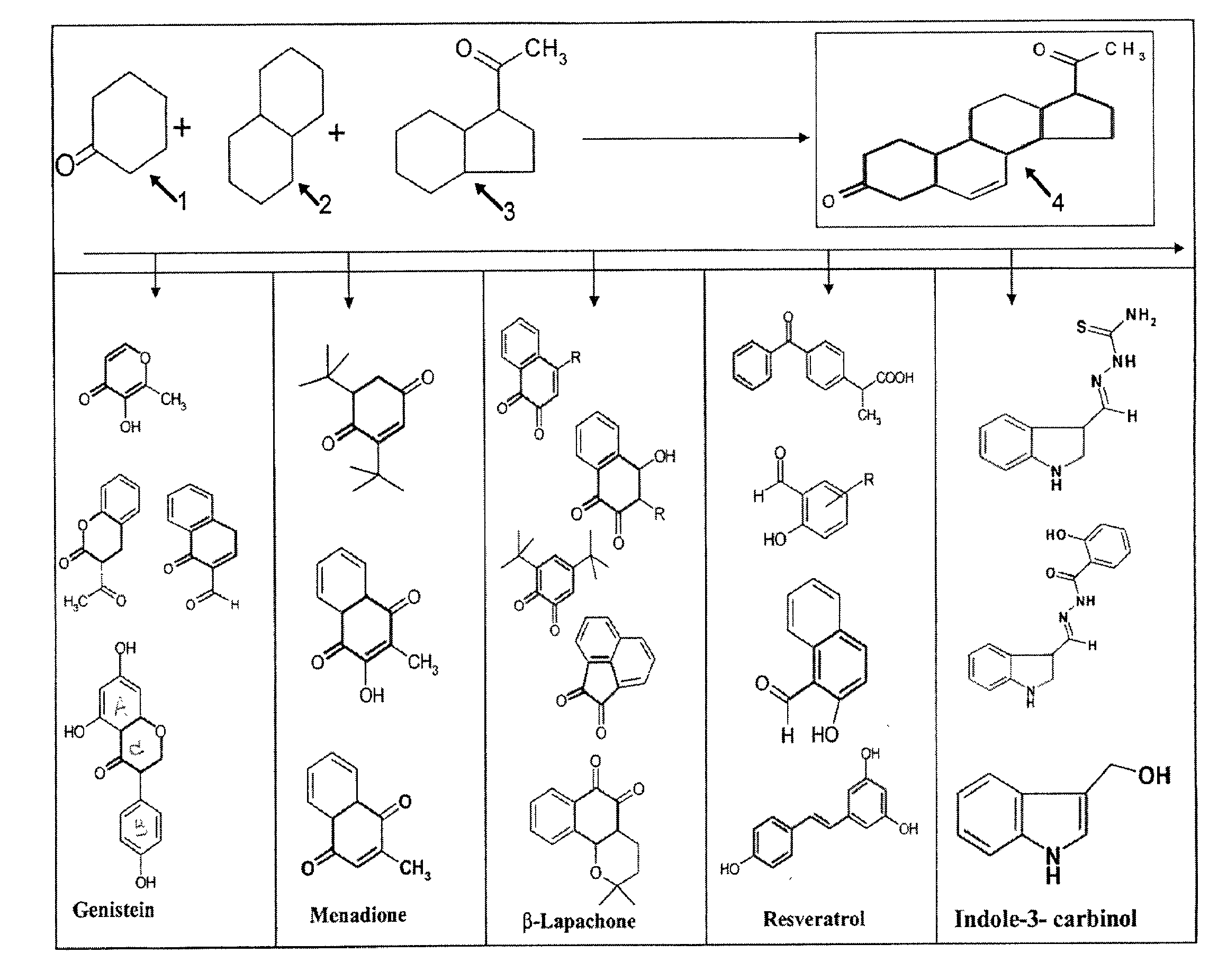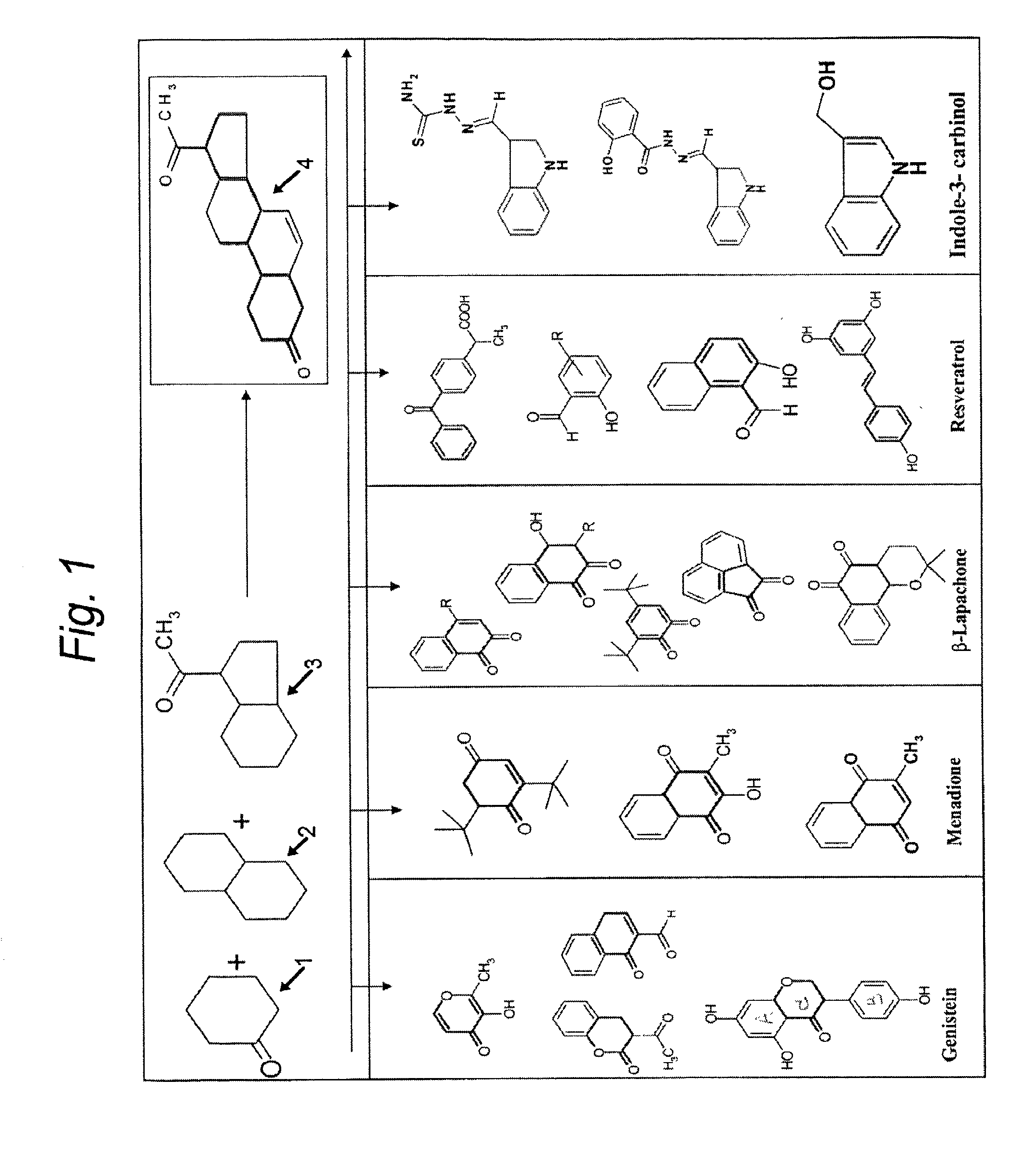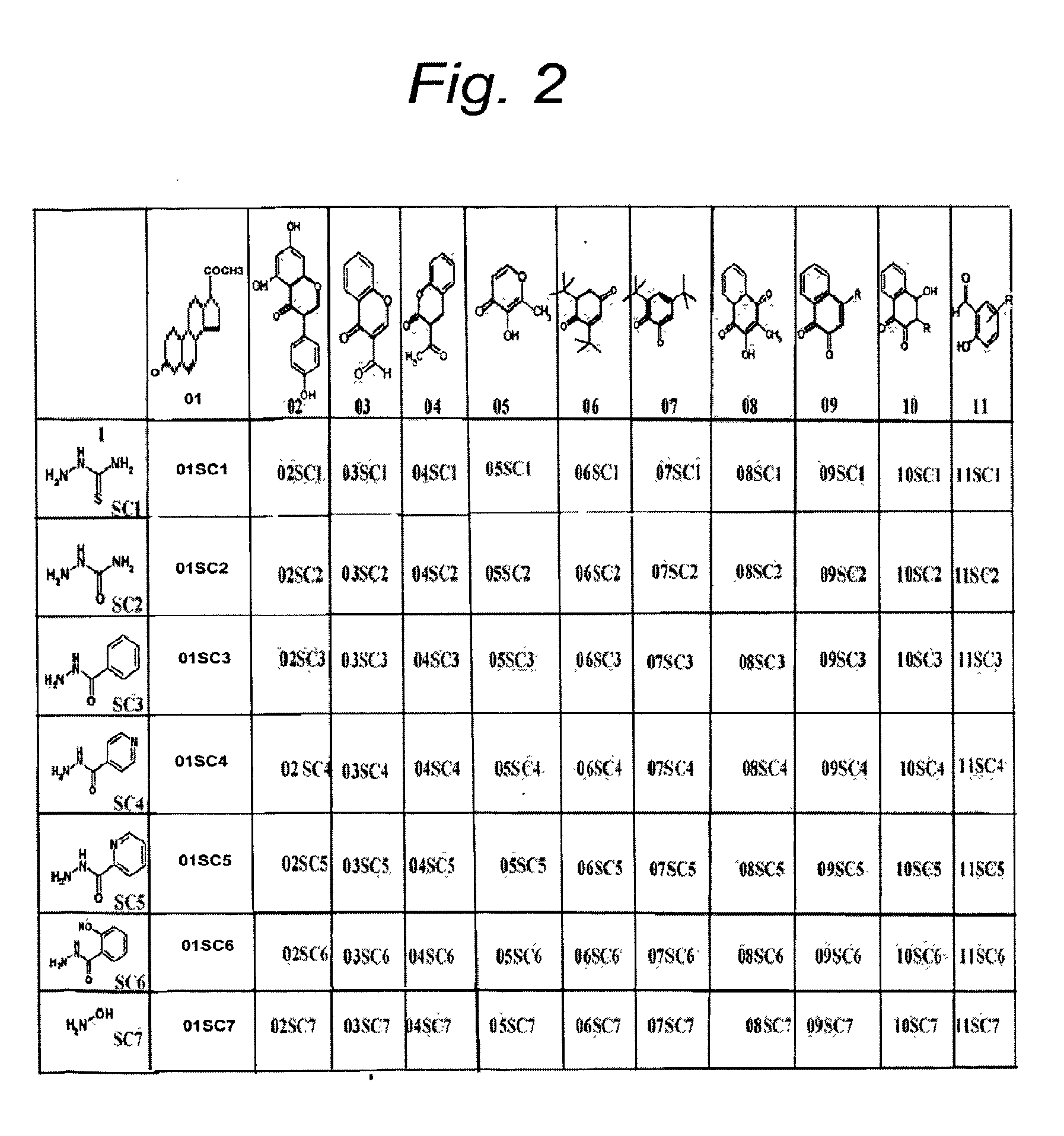Isoflavonoid Analogs and their Metal Conjugates as Anti-Cancer Agents
a technology of isoflavone and metal conjugates, which is applied in the field of isoflavone or isoflavone mimetics, can solve the problems that the potentiation of genistein alone cannot be enough to treat and/or prevent cancer, and achieve the effects of favorable interactions, rapid development, and high pharmacologic
- Summary
- Abstract
- Description
- Claims
- Application Information
AI Technical Summary
Benefits of technology
Problems solved by technology
Method used
Image
Examples
Embodiment Construction
I. Steroidal Embodiment
Synthesis of Progesterone Thiosemicarbazone Schiff Base (Compound FPA-101)
[0060]Synthesis of Thiosemicarbazide Hydrochloride
[0061]Thiosemicarbazide hydrochloride was prepared by adding 4 ml of concentrated hydrochloric acid to a slurry of 4.4 g of powdered thiosemicarbazides in 18 ml of ethanol. The mixture was stirred overnight and the white product was isolated by filtration after washes with cold ethanol to remove excess acid. The product was dried over anhydrous CaCl2.
[0062]Synthesis of Schiff Base
[0063]FIG. 3 is an illustrative reaction scheme for producing a Schiff base analog of progesterone, specifically 17-acetyl-10,13-dimethyl-1,2,6,7,8,9,11,12,13,14,15,16,17-tetradecahydrocyclopenta[a]phenanthren-3-thiosemicarbazone (hereinafter designated Compound FPA-101).
[0064]An aqueous solution of thiosemicarbazides hydrochloride (0.39 g) and a metabolic solution of progesterone acetate (available commercially from Sigma Chemicals, St. Louis, Mo.; 1 g) were mix...
PUM
| Property | Measurement | Unit |
|---|---|---|
| concentrations | aaaaa | aaaaa |
| concentrations | aaaaa | aaaaa |
| volume | aaaaa | aaaaa |
Abstract
Description
Claims
Application Information
 Login to View More
Login to View More - R&D
- Intellectual Property
- Life Sciences
- Materials
- Tech Scout
- Unparalleled Data Quality
- Higher Quality Content
- 60% Fewer Hallucinations
Browse by: Latest US Patents, China's latest patents, Technical Efficacy Thesaurus, Application Domain, Technology Topic, Popular Technical Reports.
© 2025 PatSnap. All rights reserved.Legal|Privacy policy|Modern Slavery Act Transparency Statement|Sitemap|About US| Contact US: help@patsnap.com



